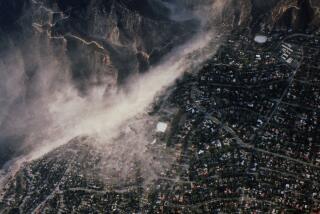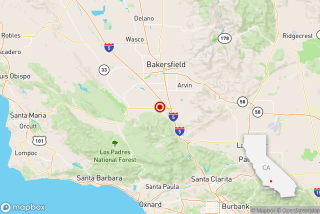Experts: Alaska Fault Shift Rivals ’06 Case
A 7.9 magnitude earthquake in Alaska this month was triggered by one of the largest fault ruptures in at least 150 years, rivaling the one that caused the great 1906 San Francisco quake, geologists said Wednesday.
The Nov. 3 quake struck a remote and sparsely populated area near Denali National Park and caused only minor injuries, although it damaged three major highways and forced officials to temporarily shut down the Trans-Alaska Pipeline.
A team of geologists who spent a week studying the temblor determined that it was largely caused by a rupture of a 130-mile section of the Denali fault, with horizontal shifts of up to nearly 26 feet.
Kerry Sieh, a geology professor at Caltech in Pasadena, said the rupture ranks in size alongside those that caused two great earthquakes along California’s San Andreas fault -- the 1906 San Francisco quake and another major temblor in 1857.
Sieh said Denali and San Andreas are both “strike-slip” faults, meaning that blocks on either side of the fracture move sideways relative to one another. Over millions of years, he said, the shifts have moved southern Alaska miles westward relative to the rest of the state.
He said the shifts have produced a set of large, aligned valleys through the middle of the snowy Alaska range, from the Canadian border in the east to Mt. McKinley in the west.
Along much of its length, Sieh said, the Denali fault crosses glaciers; during this month’s quake, it broke up through the glaciers, offsetting large crevasses and rocky ridges within the ice.
The quake also produced thousands of avalanches and rock falls.
Sieh said that in some places, enormous blocks of rock and ice fell onto glaciers and valley floors, skidding about six-tenths of a mile or more over ice, streams and tundra.
The scientists were surprised to discover that the fault rupture moved only east from the epicenter and left the western half of the great fault unbroken, Sieh said, prompting them to speculate that the quake could have been the first in a series of large events that will eventually include breaks farther west toward Mt. McKinley and Denali park.
More to Read
Sign up for Essential California
The most important California stories and recommendations in your inbox every morning.
You may occasionally receive promotional content from the Los Angeles Times.










